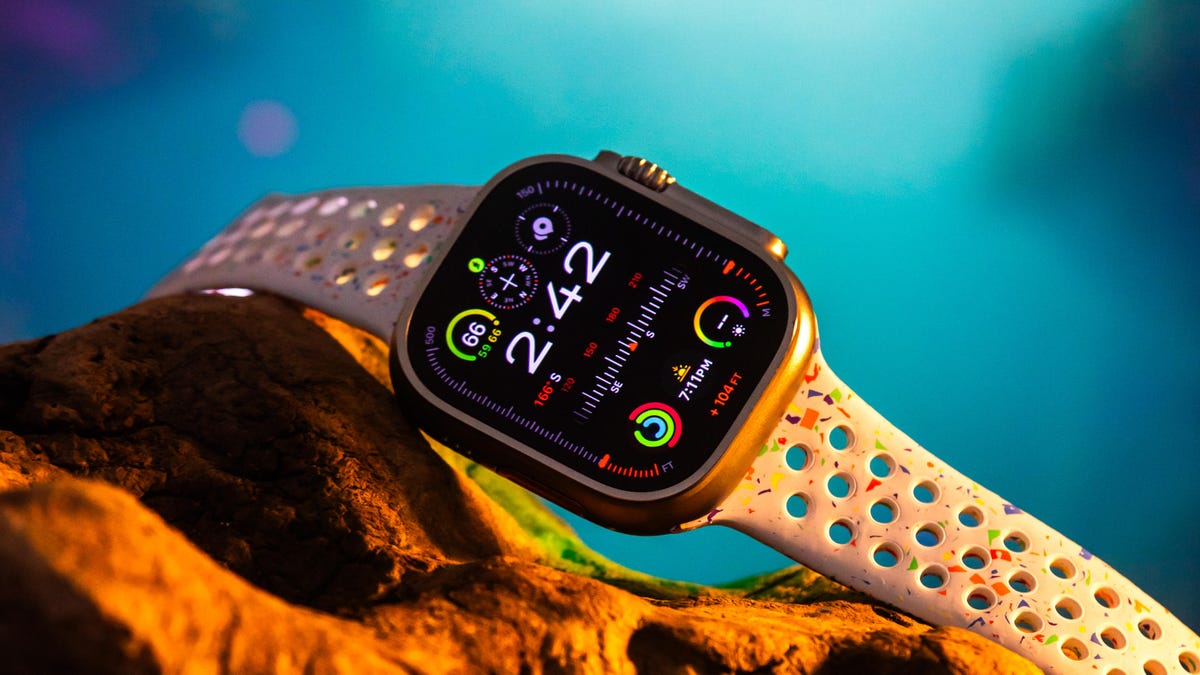1. Apple Watch Series 0 (1st Generation)
1.1. Launch and Design
The Apple Watch Series 0, released in April 2015, marked Apple’s entry into the smartwatch market. It featured a rectangular display and was available in two sizes: 38mm and 42mm. The design included a unique Digital Crown for navigation, a heart rate sensor, and a variety of customizable watch faces.
1.2. Key Features
- WatchOS 1: The initial version of the watchOS operating system offered basic functionality like notifications, fitness tracking, and messaging.
- Fitness Tracking: Included an accelerometer and heart rate monitor to track physical activity.
- Connectivity: Paired with iPhone via Bluetooth to provide notifications, calls, and messages.
2. Apple Watch Series 1 and Series 2
2.1. Series 1 (2016)
Released alongside the Series 2, the Apple Watch Series 1 featured an improved S1P chip for better performance. It retained the original design but provided a faster, more responsive experience.
2.2. Series 2 (2016)
The Series 2 brought significant upgrades, including:
- GPS Functionality: Built-in GPS allowed for tracking outdoor workouts without needing an iPhone.
- Water Resistance: Rated up to 50 meters, making it suitable for swimming.
- Brighter Display: Improved brightness for better visibility in sunlight.
3. Apple Watch Series 3
3.1. Launch and Design
Released in September 2017, the Apple Watch Series 3 continued to build on previous models with notable enhancements.
3.2. Key Features
- Cellular Connectivity: Optional LTE support enabled making calls, sending messages, and using data without an iPhone.
- Faster Performance: Upgraded S3 chip improved processing speed.
- Improved Sensors: Enhanced heart rate monitoring and fitness tracking capabilities.
4. Apple Watch Series 4
4.1. Launch and Design
Introduced in September 2018, the Apple Watch Series 4 featured a significant redesign with larger display sizes and a more refined look.
4.2. Key Features
- Larger Display: 30% larger screen with thinner bezels for more information at a glance.
- ECG Functionality: Electrocardiogram (ECG) app for monitoring heart health and detecting irregular heart rhythms.
- Fall Detection: Advanced sensors to detect falls and alert emergency contacts if necessary.
5. Apple Watch Series 5
5.1. Launch and Design
Released in September 2019, the Apple Watch Series 5 introduced several new features while maintaining the design language of its predecessor.
5.2. Key Features
- Always-On Display: The new display technology allowed users to see the watch face without having to raise their wrist.
- Built-In Compass: Added a compass app for navigation and outdoor activities.
- International Emergency Calling: Enabled emergency calls to be made internationally.
6. Apple Watch Series 6
6.1. Launch and Design
The Apple Watch Series 6, launched in September 2020, brought further enhancements and new health features.
6.2. Key Features
- Blood Oxygen Monitoring: New sensor for measuring blood oxygen levels.
- Faster Performance: Upgraded S6 chip for improved speed and efficiency.
- New Colors and Materials: Introduction of new finishes like blue and (PRODUCT)RED.
7. Apple Watch SE
7.1. Launch and Design
The Apple Watch SE, also introduced in September 2020, offered a more affordable option with many features from the Series 6 but without some advanced health sensors.
7.2. Key Features
- Performance: S5 chip for smooth performance.
- Essential Features: Includes fall detection, heart rate monitoring, and fitness tracking.
- Design: Similar design to the Series 6 but lacks the always-on display and ECG functionality.
8. Apple Watch Series 7
8.1. Launch and Design
Released in October 2021, the Apple Watch Series 7 introduced a new design and improved durability.
8.2. Key Features
- Larger Display: 20% larger screen compared to Series 6, with thinner borders for better readability.
- Durability: Improved crack resistance and better water resistance.
- Faster Charging: 33% faster charging compared to previous models.
9. Apple Watch Series 8
9.1. Launch and Design
The Apple Watch Series 8, launched in September 2022, continued to build on the Series 7 with incremental upgrades and new features.
9.2. Key Features
- Temperature Sensor: New sensor to monitor body temperature changes and assist with menstrual cycle tracking.
- Crash Detection: Enhanced safety features to detect car accidents and alert emergency services.
- WatchOS 9: New software features and improvements for health, fitness, and customization.
10. Apple Watch Ultra
10.1. Launch and Design
The Apple Watch Ultra, introduced alongside the Series 8, is designed for extreme sports and outdoor adventures.
10.2. Key Features
- Rugged Design: Durable titanium case, larger and brighter display, and improved water resistance.
- Advanced GPS: Enhanced GPS accuracy and navigation features for outdoor activities.
- Extended Battery Life: Longer battery life to support extended adventures and activities.
11. Conclusion
The evolution of the Apple Watch reflects Apple’s commitment to innovation in wearable technology. From its early days as a stylish accessory to its current status as a sophisticated health and fitness device, the Apple Watch has continually introduced features that enhance the user experience. Each new model builds on its predecessors, offering improved performance, new health monitoring capabilities, and better integration with Apple’s ecosystem.
As technology continues to advance, it will be exciting to see how the Apple Watch evolves and what new features will be introduced in future models. For now, the Apple Watch remains a powerful tool for staying connected, monitoring health, and enhancing daily life.

